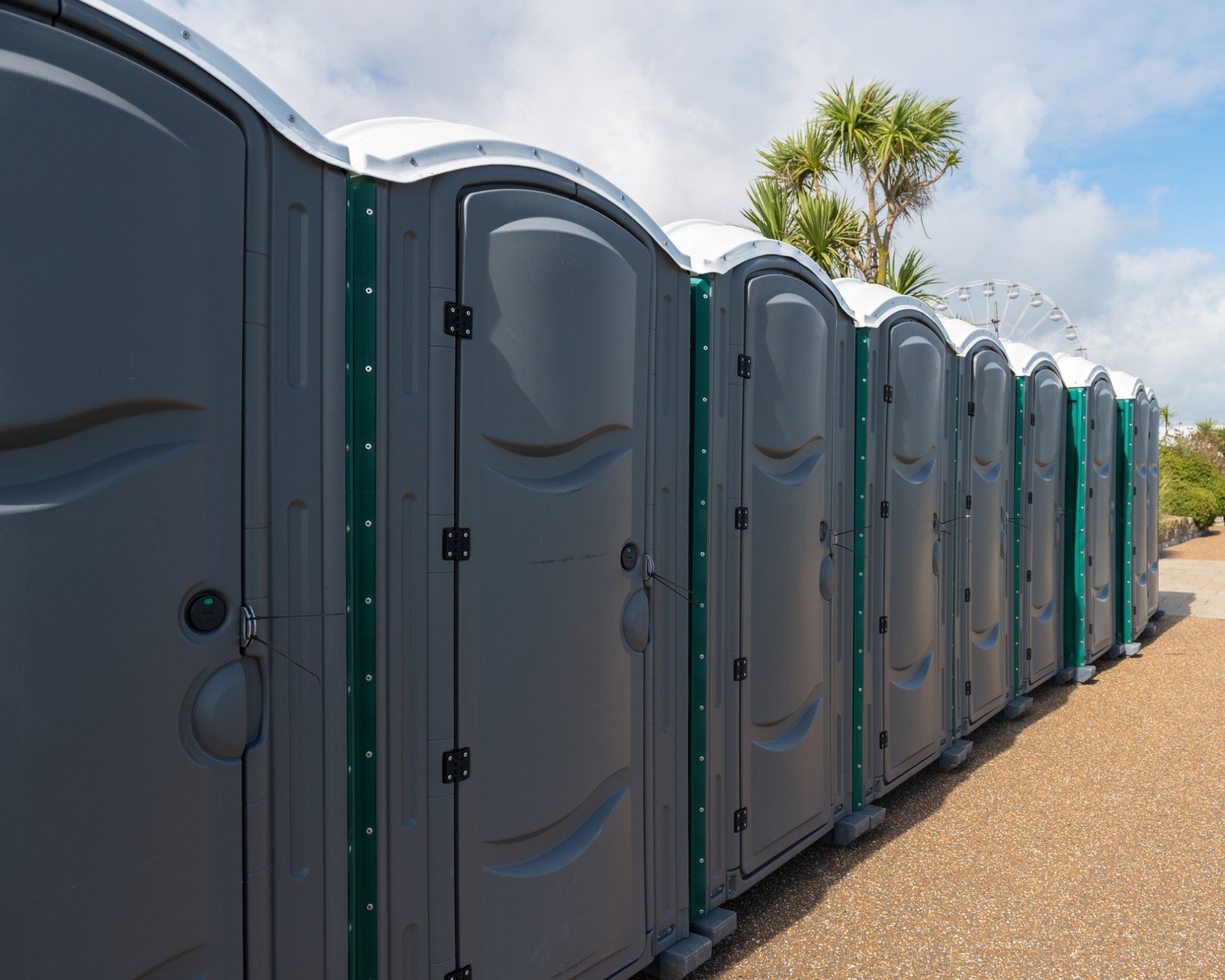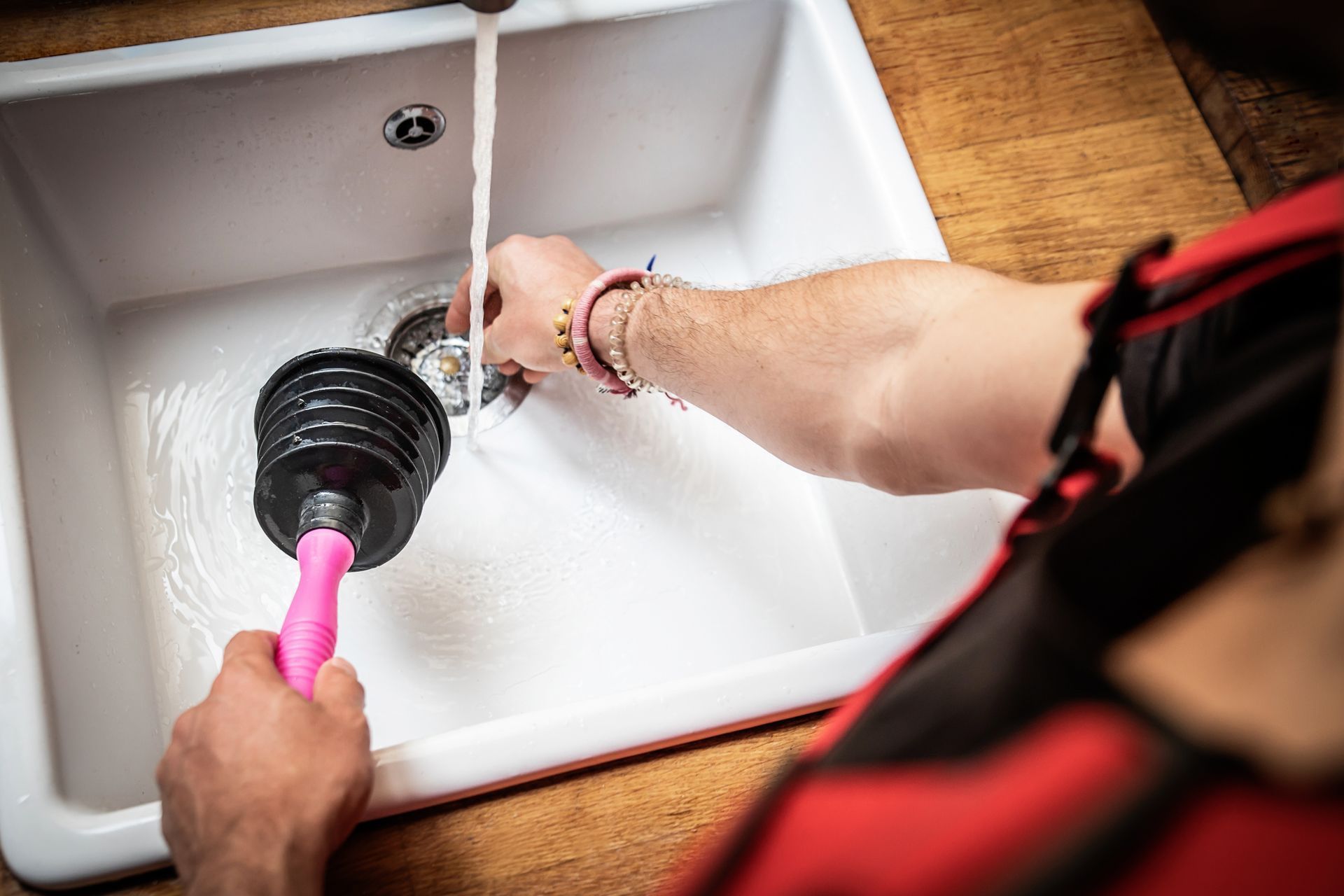Rehabilitate a Failed Septic Drainfield | O'Fallon Sewer Service
websitebuilder • February 9, 2022
Options for Rehabilitating a Failed Septic Drainfield

Drainfield failure means it can no longer handle wastes from your house. Below are some solutions for a failed drainfield, depending on the failure cause.
Hydro Jetting
A clogged septic pipe will prevent sewer effluent from reaching the septic tank. Blocked effluent can flow back into the house. The blockage can also increase pressure within the pipe and cause effluent leakage. Septic lateral lines carry waste from the septic tank and distribute it throughout the septic field. Your tank might overflow if something blocks the lateral lines.
Hydro-jetting may solve either of these problems. In hydro-jetting, your septic contractor uses pressurized water to clean out the obstructions. The contractor inserts a hose with pressurized water into the pipes and laterals. The pressurized water breaks down and cleans out the debris.
Terralift
The septic drainfield absorbs wastes from the septic tank and safely sends them down to the ground. The waste disposal process works if the drainfield soil is porous enough to absorb water. Soil compaction interferes with the permeability and the drainfield's ability to absorb water. That might be the case if you operate heavy machinery or undertake construction on the drainfield.
The terralift technology can help you rejuvenate such a drainfield. With the technology, your septic contractor will use a pneumatic tool to penetrate the soil to a reasonable depth. The pneumatic tool will then force air into the compacted soil to break it up into tiny pieces. The pressurized air also creates new pathways or fissures for septic waste absorption.
Alternative Drainfield
You may have to construct a new drainfield if the existing one is so damaged that temporary solutions cannot help. An alternative drainfield is a viable option if you have adequate space and resources. Your contractor will divert waste from the tank to the new drainfield after the construction.
Consider leaving the old drainfield undamaged if you decide to take this route. Most drainfields rejuvenate themselves if you give them enough time. Thus, you can use the old drainfield as the new one heals and alternate between them over the years.
Replacement Trenches
A septic system can fail so that only the trenches are compacted while the soil between them remains undisturbed. In such a case, you can install new trenches between the old ones. The replacement trenches are helpful if you don't have space for a replacement drainfield.
The new and old trenches should have independent connections to the septic tank. That way, you can switch between the old and new trenches. The alternative use of the trenches gives each system time to rejuvenate while the other is in use. For example, you can use one system for a couple of years while the other rejuvenates.
Improved Drainage A flooded septic drainfield might struggle to absorb more waste. The effect is the same as that of a compacted drainfield in such a case. Fortunately, failure due to flooding is relatively easy to handle:
Instead, relieve pressure on the system and wait for the flooding to go down. After that, improve the drainage system around the drainfield. For example, dig drainage channels around the septic system, ensure the land slopes away from the system, and direct roof water away from the drainfield.
O'Fallon Sewer Service has over 50 years of experience in the plumbing and sewer industry. Contact us to assess your failing septic drainfield to determine how to salvage it.
Hydro Jetting
A clogged septic pipe will prevent sewer effluent from reaching the septic tank. Blocked effluent can flow back into the house. The blockage can also increase pressure within the pipe and cause effluent leakage. Septic lateral lines carry waste from the septic tank and distribute it throughout the septic field. Your tank might overflow if something blocks the lateral lines.
Hydro-jetting may solve either of these problems. In hydro-jetting, your septic contractor uses pressurized water to clean out the obstructions. The contractor inserts a hose with pressurized water into the pipes and laterals. The pressurized water breaks down and cleans out the debris.
Terralift
The septic drainfield absorbs wastes from the septic tank and safely sends them down to the ground. The waste disposal process works if the drainfield soil is porous enough to absorb water. Soil compaction interferes with the permeability and the drainfield's ability to absorb water. That might be the case if you operate heavy machinery or undertake construction on the drainfield.
The terralift technology can help you rejuvenate such a drainfield. With the technology, your septic contractor will use a pneumatic tool to penetrate the soil to a reasonable depth. The pneumatic tool will then force air into the compacted soil to break it up into tiny pieces. The pressurized air also creates new pathways or fissures for septic waste absorption.
Alternative Drainfield
You may have to construct a new drainfield if the existing one is so damaged that temporary solutions cannot help. An alternative drainfield is a viable option if you have adequate space and resources. Your contractor will divert waste from the tank to the new drainfield after the construction.
Consider leaving the old drainfield undamaged if you decide to take this route. Most drainfields rejuvenate themselves if you give them enough time. Thus, you can use the old drainfield as the new one heals and alternate between them over the years.
Replacement Trenches
A septic system can fail so that only the trenches are compacted while the soil between them remains undisturbed. In such a case, you can install new trenches between the old ones. The replacement trenches are helpful if you don't have space for a replacement drainfield.
The new and old trenches should have independent connections to the septic tank. That way, you can switch between the old and new trenches. The alternative use of the trenches gives each system time to rejuvenate while the other is in use. For example, you can use one system for a couple of years while the other rejuvenates.
Improved Drainage A flooded septic drainfield might struggle to absorb more waste. The effect is the same as that of a compacted drainfield in such a case. Fortunately, failure due to flooding is relatively easy to handle:
- Avoid or minimize your water use to reduce effluent flow to the system.
- Resist the temptation to pump the septic tank or while the ground is flooded; the tank might float out of the ground if you do that.
- Don't excavate around the drainfield to drain the water, as that might contaminate the environment.
Instead, relieve pressure on the system and wait for the flooding to go down. After that, improve the drainage system around the drainfield. For example, dig drainage channels around the septic system, ensure the land slopes away from the system, and direct roof water away from the drainfield.
O'Fallon Sewer Service has over 50 years of experience in the plumbing and sewer industry. Contact us to assess your failing septic drainfield to determine how to salvage it.
This article takes a detailed look into the most prevalent factors contributing to sewer backups in and around your home. Read on for more.
The pipes in your home and workplace are often out of sight, out of mind. But as they age, they can pose a variety of issues. Read about them in this blog.
Bursting water pipes is a common issue that homeowners face. Here are some common causes of burst pipes and how you can prevent this unpleasant issue.
Some tree roots invade underground drainage pipes and wreak havoc. Discover how to safeguard your investment and keep your drains flowing freely.
One way to increase value is upgrading the plumbing system. Read on to discover four plumbing ideas to help increase a home's worth before selling.
If you own a home with a septic tank, locating your septic tank can be difficult. Discover five simple ways to locate your septic tank.
As a homeowner, you must learn to detect sump pump issues early. Read this blog to learn about four common sump pump issues to look out for.
If you get the right plumber for your home, you will save money and time. Discover how to find the best plumber for your next project.








